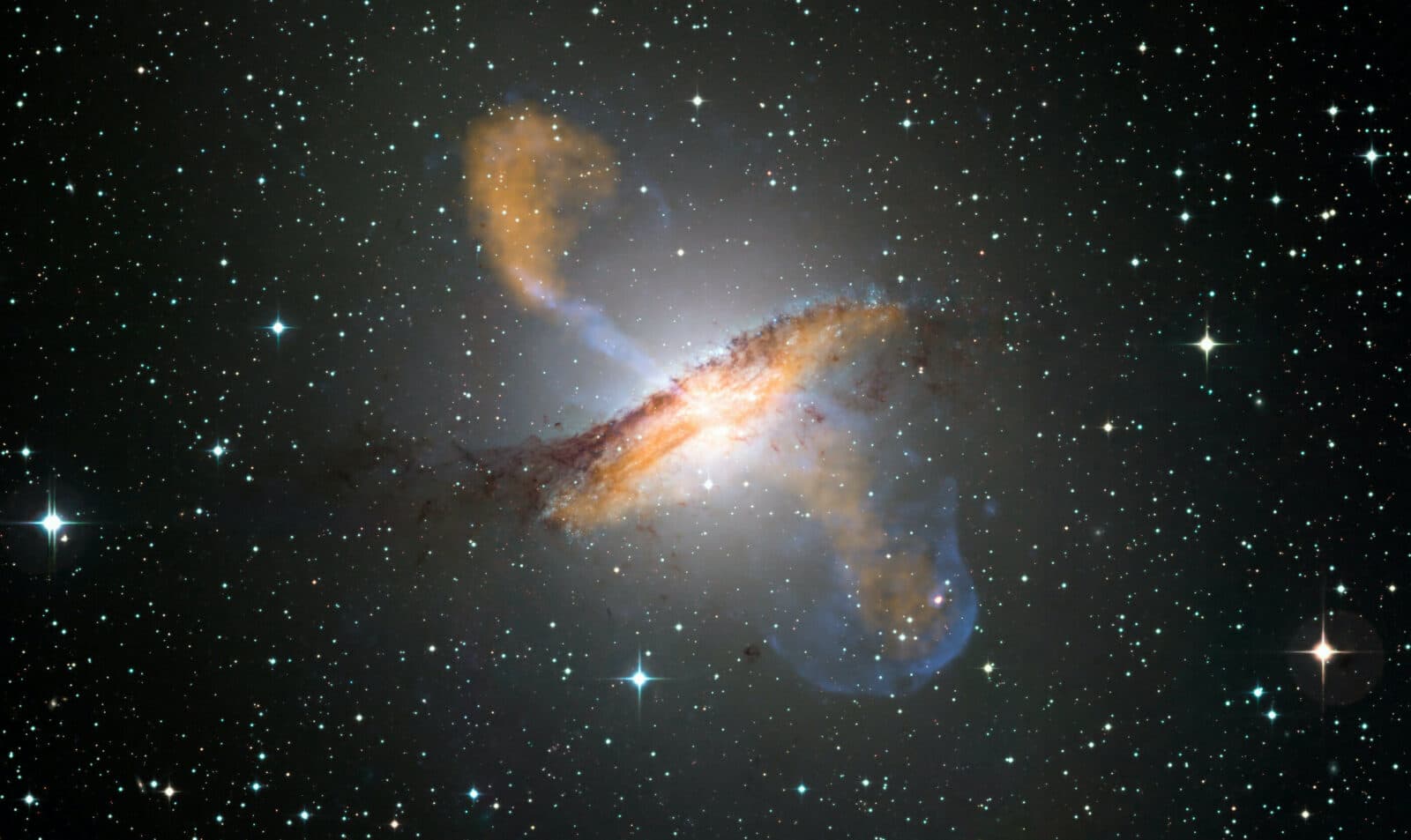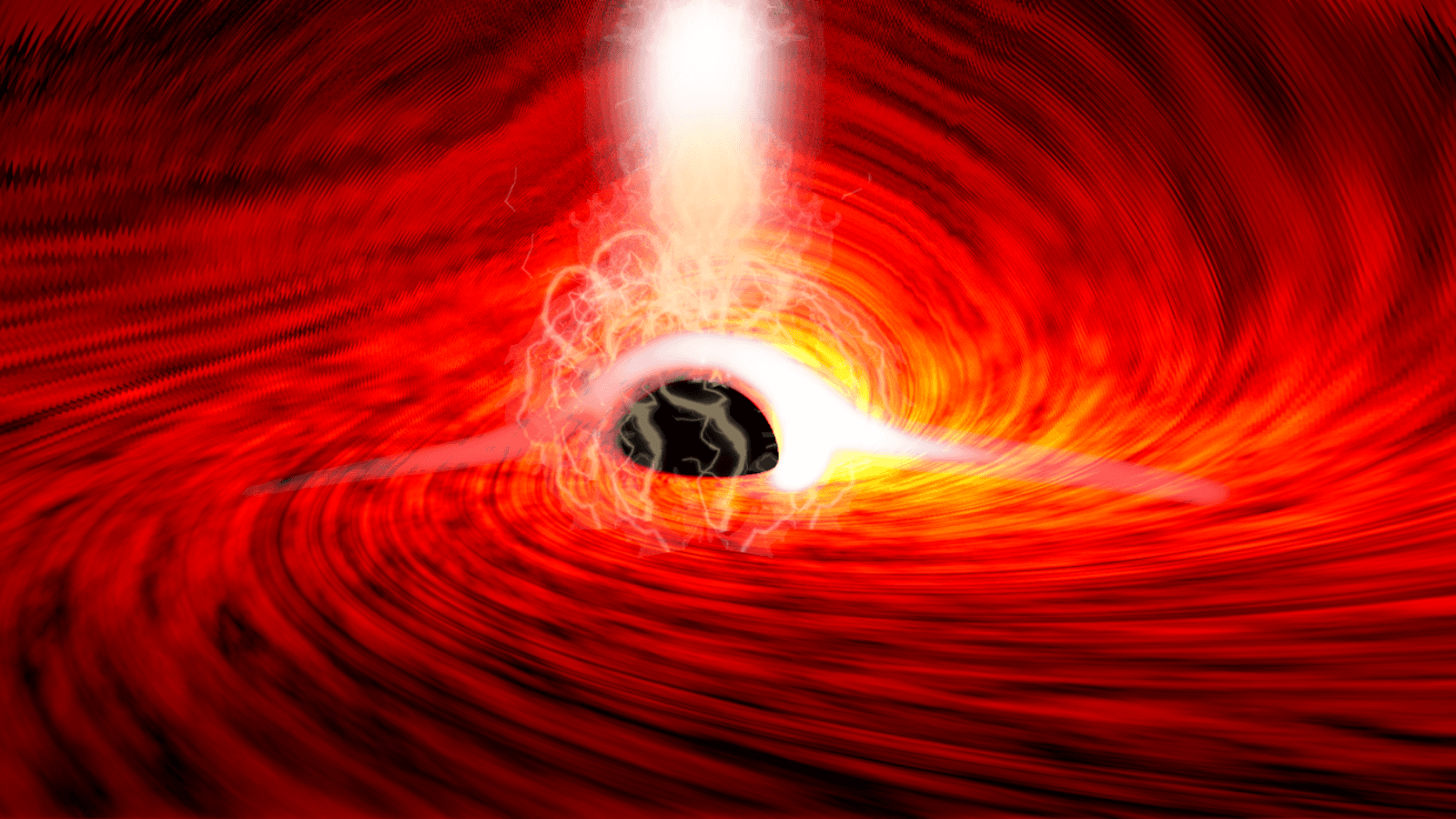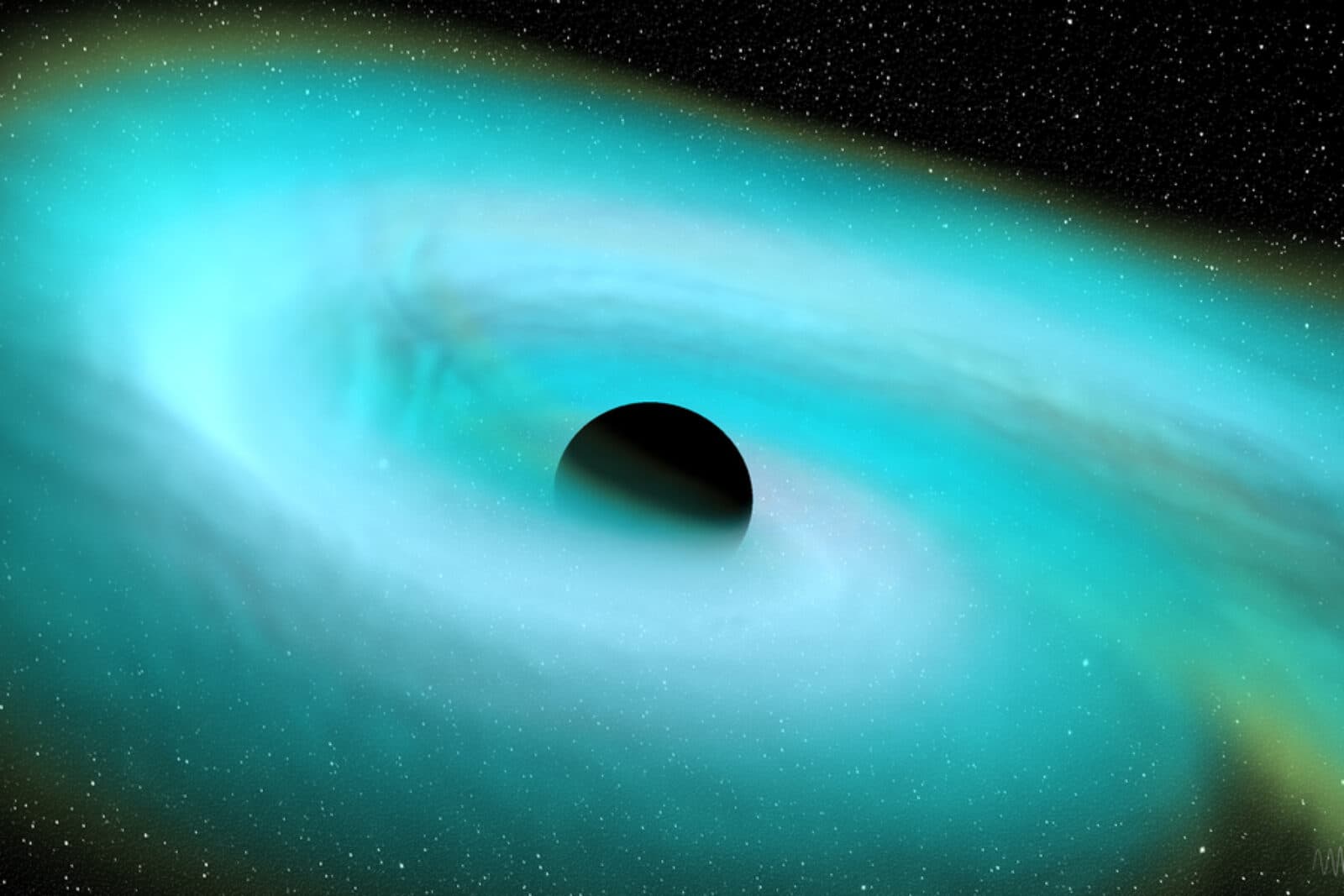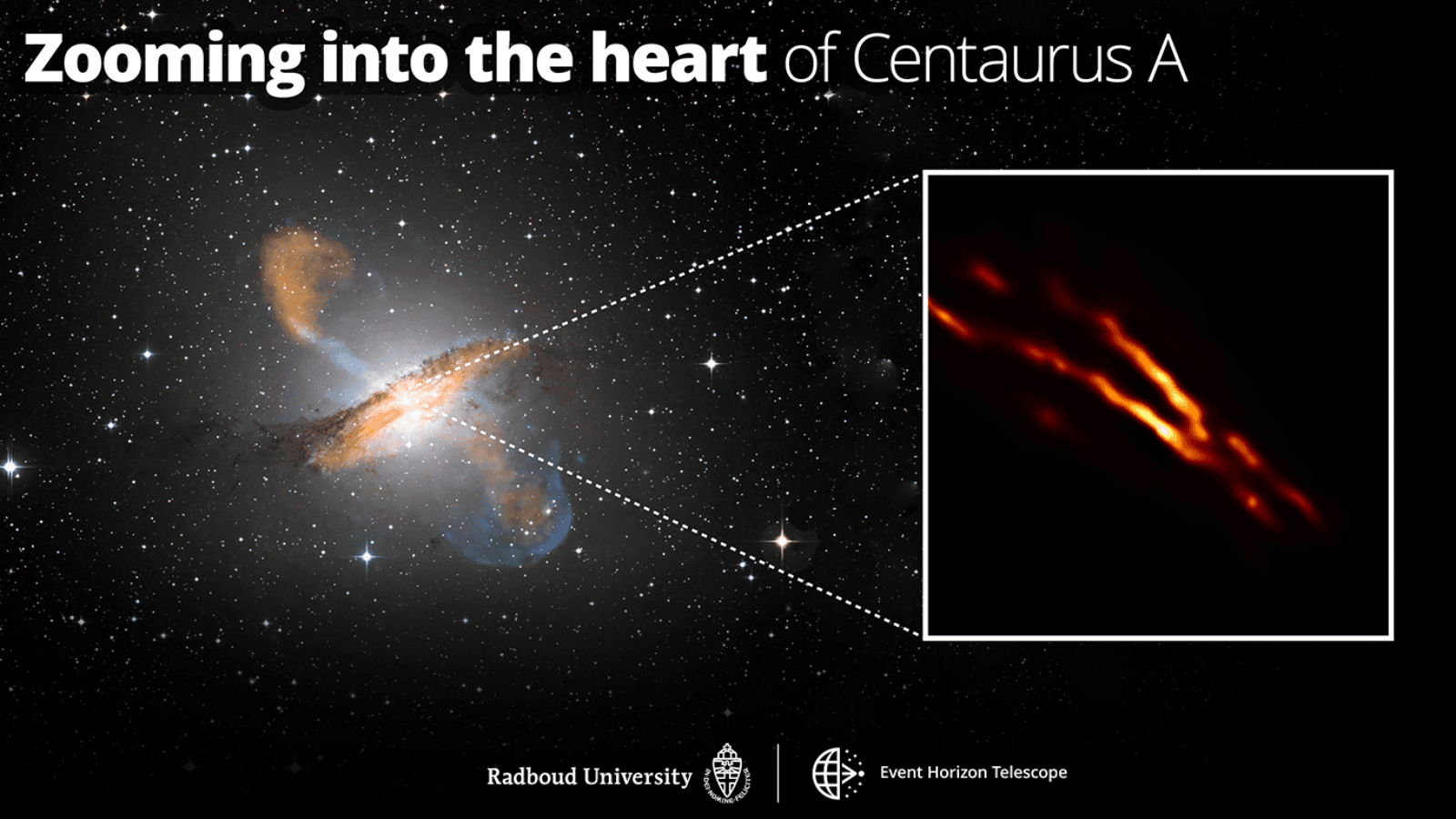Black Holes, Astrophysical Tell-Alls
by Adam Hadhazy
Kavli researchers continue to leverage the extreme natures of black holes for major insights into the universe's workings

The Author
It is counterintuitive that black holes, the places in our universe where matter and energy become trapped, are veritable founts of theoretical physics and astrophysics. As with so much else in modern physics, black holes trace back to Albert Einstein. His theory of general relativity — put forth in 1916 — allows for regions of the spacetime fabric of the universe to become so warped by extreme concentrations of mass that gravitational pits form, and so steep that not even fleet-footed light can climb out.
Since then, numerous other scientific luminaries have grappled with the implications of such extreme loci. It has turned out that black holes, like soft drinks and fries, come in small, medium, and large varieties, spanning a few times on up to billions of times the mass of our sun. Black holes on the small end, which are leftovers from big stars, have provided key insights into all of stellar evolution. Meanwhile, on the larger end, black holes ("supermassive" in the parlance) dominate the centers of nearly all galaxies. These monster black holes, while serving as laboratories for extremely high-energy astrophysics, play critical roles in the evolution of entire galaxies. Given black holes' accordingly tremendous astrophysical importance, researchers at Kavli Astrophysics Institutes diligently study these objects, both theoretically and observationally. In recent weeks, a spate of significant findings has come out. Spoiler alert: Einstein's legacy has endured, with his general relativity still passing every test modern science can throw at it. In the process, though, black holes are becoming just a wee bit less mysterious, as Einstein's and other scientists' predictions regarding their natures continue to be borne out. Black holes, it seems, are nothing at all like a cosmic dead end, but instead serve as incisive avenues into the workings of reality.

Black hole X-ray "echoes" captured
For the first time, researchers have spied x-rays from "behind" a black hole, fulfilling — yet again — another prediction made by Albert Einstein. The XMM-Newton space telescope had been capturing run-of-the-mill X-ray flares from a black hole when researchers noticed additional, delayed, smaller, and frequency-shifted X-rays. The research team — led by scientists at the Kavli Institute for Particle Astrophysics and Cosmology at Stanford University — realized that the observations fit with predictions of so-called "X-ray echoes." The idea is that typical X-ray flares' light reflects back onto the black holes' accretion disk, and then that reflected light gets caught up in the black holes' extreme gravity, ultimately spitting back out in the direction of an observer. Understanding these X-ray echoes will help in further mapping out the structure and features of black holes.
The next generation of the xenon-powered dark matter search
The hunt for dark matter will take its next giant leap with a newly announced collaboration among some of today's leading dark matter seekers. An understanding to build a next-generation detector was recently reached by international teams of researchers, including members of the Kavli Institute for Cosmological Physics at the University of Chicago and the Kavli Institute for the Physics and Mathematics of the Universe at the University of Tokyo. The collaboration plans to build a detector, using the element xenon, that is five to 10 times bigger than the largest current such detectors. Volume matters when it comes to these kinds of searches, which rely on predicted rare interactions between highly inert xenon and hypothetical dark matter particles. Even if current detectors manage a groundbreaking detection, the next-gen instrument would enable much deeper study of the hoped-for interactions.
Black holes' event horizons do not shrink
Fifty years ago, the late physicist Stephen Hawking predicted that the event horizon — the "point of no return" around a black hole — should never shrink. Now thanks to the revolutionary Laser Interferometer Gravitational-wave Observatory (LIGO), Hawking's premise has been strongly supported. Researchers at the Massachusetts Institute of Technology's Kavli Institute for Astrophysics and Space Research (MKI) one of the places that led LIGO's development — deeply analyzed the first gravitational wave event captured by LIGO back in 2015. That event was spawned by two black holes merging and converting a portion of their combined mass to energy in the form of gravitational radiation. That radiation then propagated through spacetime like ripples upon a lake. By measuring the properties of these waves, the researchers inferred that the event horizon around the newly created black hole formed by the merger was indeed no smaller than the combined size of the original two event horizons.
Confirmation that black holes and neutron stars collide
Speaking of LIGO, researchers at MKI and their colleagues also recently announced a significant milestone in the field of gravitational wave astronomy the instrument inaugurated. Over a span of 10 days in January 2020, LIGO and its fellow grav wave detector, Virgo, captured two unusual sets of waves. Subsequent analysis of the events has shown that the waves fit predictions for black holes and neutron stars smashing together, rather than just two black holes or two neutron stars, as had been detected to date. Neutron stars are the extremely dense remnants of stars with typically at least eight times the mass of the sun; black holes form from the demise of even more massive stars. Researchers have long expected that systems of colossal stars could end up as black hole and neutron star pairs that, over time, would in-spiral into each other and make waves gravitationally, so to speak. The discoveries offer unique insights into both kinds of objects.

Unprecedented details of monster black holes' jet revealed
Smile, black holes, it's time for your closeup! Thanks to the Event Horizon Telescope (EHT), a pioneering international collaboration of telescopes located around the world, researchers have been able to image the supermassive black holes in the centers of galaxies over the last couple years. The latest findings from EHT have now imaged the jet spewing from the black hole in the core of the galaxy Messier 87. The jet, as it turns out, emits radiation mostly from its edges, in defiance of conventional models. The basic mechanism behind such jets appears to be the black hole's powerful gravity that pulls in matter, but in the process scatters some high-speed particles into a column that can stretch longer than even the host galaxy's breadth. Overall, though, the formation and behavior of these kinds of jets is poorly understood, and the new detailed imaging from EHT should help decipher what is going on. Members of the Kavli Institute for Cosmological Physics at the University of Chicago are part of the team behind the findings.
